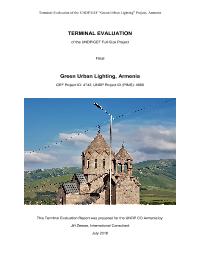
Green Urban Lighting Final Evaluation
Output 1.5. Inclusive and sustainable solutions adopted to achieve increased energy efficiency and universal modern energy access (especially off-grid sources of renewable energy)
Goal 7. Ensure access to affordable, reliable, sustainable and modern energy for all
Goal 13. Take urgent action to combat climate change and its impacts
7.a By 2030, enhance international cooperation to facilitate access to clean energy research and technology, including renewable energy, energy efficiency and advanced and cleaner fossil-fuel technology, and promote investment in energy infrastructure and clean energy technology
13.2 Integrate climate change measures into national policies, strategies and planning
1: Environment & Sustainable Development
2: Others


